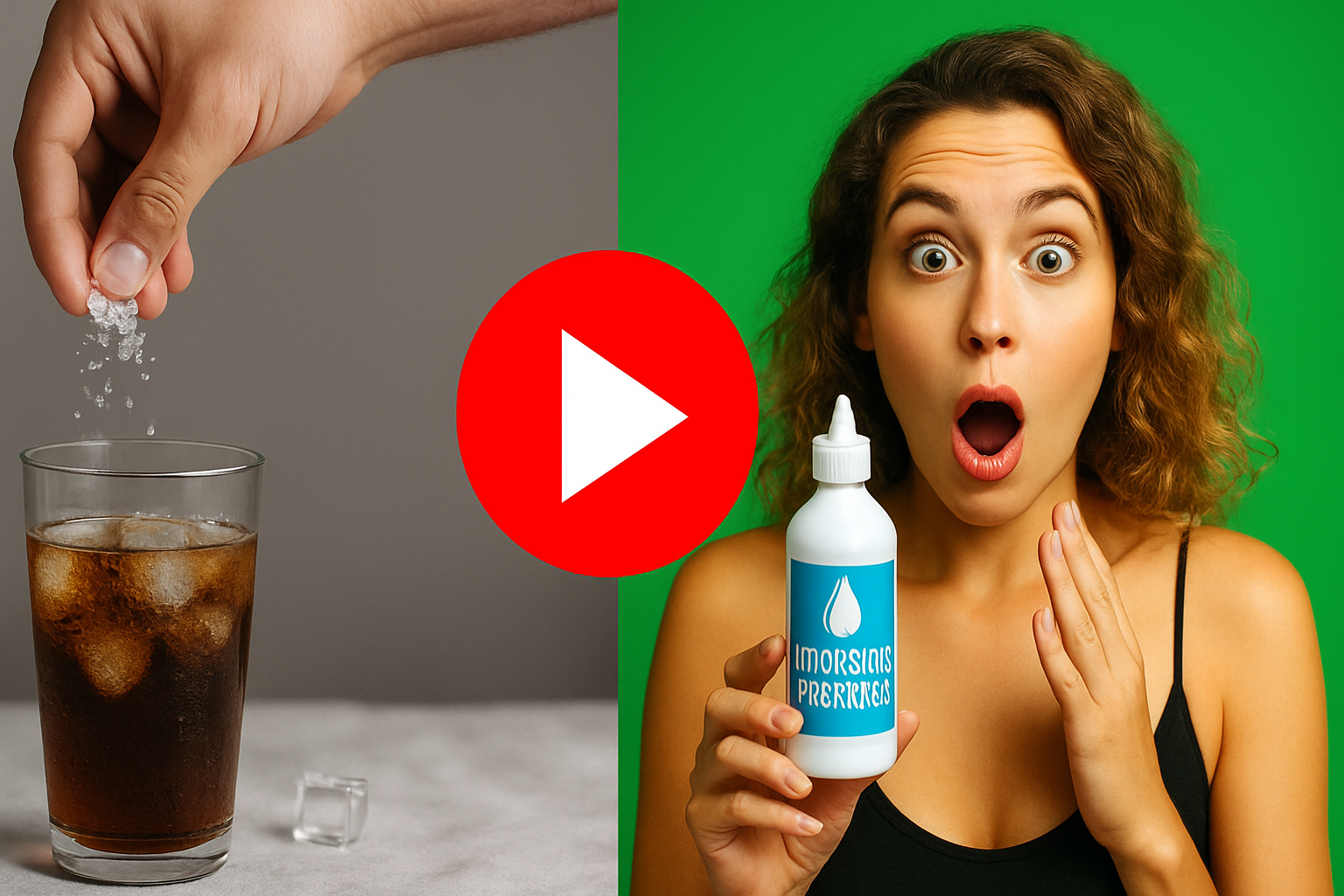How to Use Hydrogen Peroxide for Erectile Dysfunction
Erectile dysfunction (ED) is a complex condition with multifactorial causes—including vascular, neurological, hormonal, and psychological factors—and is commonly seen in men over 40 .
ED Treatment at Home | Powerful Methods to Cure ED [2025]

With cardiovascular disease, diabetes, high blood pressure, smoking, and aging being primary contributors, it’s no wonder many seek novel or alternative treatments when standard therapies fall short.
One unconventional avenue that has recently attracted attention is hydrogen peroxide (H₂O₂)—classically known as a mild antiseptic.
Some anecdotal reports and patent filings suggest topical or diluted ingestion of hydrogen peroxide may improve blood flow, oxidative balance, or penile oxygenation, potentially enhancing erectile function. Is there scientific merit to this? And if so, how can hydrogen peroxide be used safely and effectively?
In this post, we’ll explore:
- What hydrogen peroxide is—and what we already know about its safety.
- Theories on how it might influence erectile function.
- Existing studies, patents, and anecdotal accounts.
- Practical protocols—topical and dilute ingestion.
- Risks to be aware of.
- How it compares to conventional ED treatments.
- Key unanswered questions and what research is still needed.
Hydrogen Peroxide: Basic Properties & Safety Profile
Hydrogen peroxide (H₂O₂) is a simple molecule consisting of two hydrogens and two oxygens. At low concentrations (3–6%), it’s commonly used as a household disinfectant. In higher concentrations—10–35%—it can cause oxidative damage, irritation, and even chemical burns if misused .
The USDA, FDA, and other health authorities caution against ingesting or injecting anything but water-grade hydrogen peroxide; ingestion—even at “food-grade” concentrations—carries serious risks, including gas embolisms.
Mechanistically, H₂O₂ breaks down into water and oxygen. Proponents argue that the liberated oxygen may increase local tissue oxygen levels or contribute to vasodilation via nitric oxide pathways. Of course, the key question is when, where, how much, and does it truly help ED?
Theoretical Mechanisms Supporting Its Use in ED
Several biological theories exist:
Vasodilation & Nitric Oxide (NO) Enhancement
One small-scale study proposes H₂O₂ may enhance endothelial nitric oxide production, which in turn promotes smooth-muscle relaxation and improved blood flow. Since penile erection depends directly on NO-mediated dilation of penile arteries, this is plausibly relevant.
Alleviating Oxidative Stress
Oxidative stress—characterized by excessive reactive oxygen species (ROS)—is a recognized factor in ED, impairing NO availability and endothelial function. Though counterintuitive, proponents suggest that controlled doses of H₂O₂ might stimulate endogenous antioxidant defenses or promote mild oxidative “eustress,” potentially improving oxidative balance .
Oxygen Boost to Penile Tissue
Users on forums have reported that diluted “food-grade” H₂O₂ ingestion increases systemic oxygen and improves erectile performance. Additionally, vacuum erection devices (VEDs) that increase local oxygen levels are FDA-approved as adjunct therapy—indicating that greater penile oxygenation can support erectile function.
What Does the Evidence Show?
Laboratory & Preclinical Studies
- A 2022 in vitro study on mouse muscle cells (C2C13) found that non-cytotoxic H₂O₂ exposure significantly increased dihydrotestosterone (DHT) release—an androgen involved in sexual function—via increased steroidogenic enzyme expression. While muscle cells are not penile tissue, this suggests H₂O₂ can influence local androgen physiology.
- A Google patent filing (US20050276865) explicitly claims topical peroxide formulations (e.g. benzoyl or carbamide peroxide at 3–15%) directly applied to genital tissues “can be helpful to improve” sexual dysfunction. Though patents don’t equal clinical proof, the inventors do assert measurable vasodilatory and arousal effects.
Anecdotes & Self-Experiments
On Earth Clinic, anecdotal reports claim low-dose ingestion (e.g., 3 drops of 35% “food grade” H₂O₂ diluted in a glass of water or milk) led to erection improvements. However, such “successes” are highly uncontrolled and unverified.
No Large Clinical Trials
At this point, there are no robust clinical trials or medical journal articles studying hydrogen peroxide as an ED treatment. Experts caution that available studies are preliminary (cell-based or patent-level). Medical consensus still recommends evidence-based therapies over experimental methods.
Protocols for Using H₂O₂
Despite the lack of established guidelines, two main usage methods are circulating:
Topical Application (Patent-Inspired Protocol)
- Formulation: Create a gel or cream containing peroxide (e.g., benzoyl or carbamide peroxide).
- Concentration: 3–15% peroxide by weight.
- Timing: Apply 15 minutes to 1 hour before sexual activity.
- Frequency: Once daily, no more than 2–3 times/day.
- Rinsing: Typically left on; follow product or medical advice.
This is based strictly on the patent. No clinical testing in humans is cited.
Diluted Oral Ingestion (Anecdotal Approach)
- Substance: “Food grade” 35% hydrogen peroxide.
- Dilution: One drop in a glass of water or milk.
- Titration: Begin with low doses, gradually increase.
- Remarks: Some report ingestion twice daily with positive effects.
Important: This method is not medically recommended—ingestion even in low doses carries risk and lacks safety data.
Risks & Safety Considerations
Topical Risks
- Skin Irritation: Redness, blistering, peeling, burning.
- Tissue Damage: High concentrations can harm mucosal tissues.
- Infection: Damaged skin may increase infection risk.
Oral Ingestion Risks
- Gastrointestinal Distress: Nausea, cramps, vomiting.
- Oxygen Embolism: Potentially fatal risk when gas enters bloodstream.
- Toxicity: At higher concentrations, ingestion is known to cause serious harm—including hemorrhage and death.
Oxidative Stress Overload
While mild oxidative stimuli may sometimes be beneficial, excessive oxidative stress is linked to cellular damage and disease, including cardiovascular issues .
Comparison with Standard ED Treatments
| Treatment | Mechanism | Evidence Level | Safety Profile |
| PDE-5 inhibitors (Viagra, Cialis) | Enhance NO signaling | High-quality randomized trials | Well-studied; side effects known |
| Penile injections, VEDs, implants | Direct vasodilation or structural support | Clinical validation | Proven but invasive |
| Topical H₂O₂ | Promotes oxygenation, NO, and potentially androgen release | Preclinical/patent/ anecdotal | Risky; no clinical validation |
Takeaway: Standard treatments are proven, regulated, and safe for most men. H₂O₂ remains speculative and potentially risky.
Unanswered Questions & Research Needs
To evaluate hydrogen peroxide as a legitimate ED treatment, key research is missing:
- Randomized clinical trials comparing topical H₂O₂ cream vs placebo.
- Safety assessments on penile tissue histology, mucosal integrity, systemic absorption.
- Dose–response studies to balance efficacy and cytotoxic risk.
- Pharmacodynamics: Establish whether peroxide induces meaningful increases in local NO, blood flow, or hormones.
- Long-term follow-up on both efficacy and potential adverse events.
Until such data exist, hydrogen peroxide use for ED remains experimental, not medical.
Summary & Practical Guidance
Mechanistically plausible, but low evidence: H₂O₂ could promote penile vasodilation or oxygenation—but this remains theoretical and preclinical.
Approaches exist: Patent-based topical application and anecdotal ingestion are being tried—but neither is backed by published clinical trials.
Safety concerns are real: Particularly with ingestion and high concentrations; documented cases of burns and embolisms are alarming.
Stick with proven treatments: For now, evidence-based therapies—PDE-5 inhibitors, topical alprostadil, VEDs, implants, lifestyle changes—are far safer and better studied .
If you still want to explore H₂O₂:
- Always consult a healthcare provider first.
- If using a topical 3–15% gel, do a small patch test.
- Never ingest H₂O₂ except under direct medical supervision—a lab setting.
- Monitor closely for skin irritation or any systemic symptoms.
Final Take
Hydrogen peroxide for ED is an intriguing idea that touches on physiology of oxygen delivery, nitric oxide, and androgen release—but remains scientifically unproven in humans.
While preclinical studies and patent claims point to possible mechanisms, there’s no robust clinical validation. Meanwhile, serious safety concerns exist—especially with ingestion or misuse.
For men seeking effective ED management, established therapies offer better outcomes with lower risk. But for those who understand the caveats and are convinced by theoretical benefit, a carefully supervised topical trial may be the least hazardous route.
Ultimately, H₂O₂ is not ready for prime time in urology. Stay curious, stay safe—and when in doubt, stick with what works and what’s safe.
References
- https://www.ncbi.nlm.nih.gov/pmc/articles/PMC9223901
- https://www.happyurology.com/blog/using-hydrogen-peroxide-for-erectile-dysfunction
- https://rexmd.com/learn/does-hydrogen-peroxide-help-with-ed
- https://patents.google.com/patent/US20050276865A1/en
- https://www.earthclinic.com/cures/erectile-dysfunction/hydrogen-peroxide.html
- https://www.mdpi.com/1467-3045/46/8/521
.



